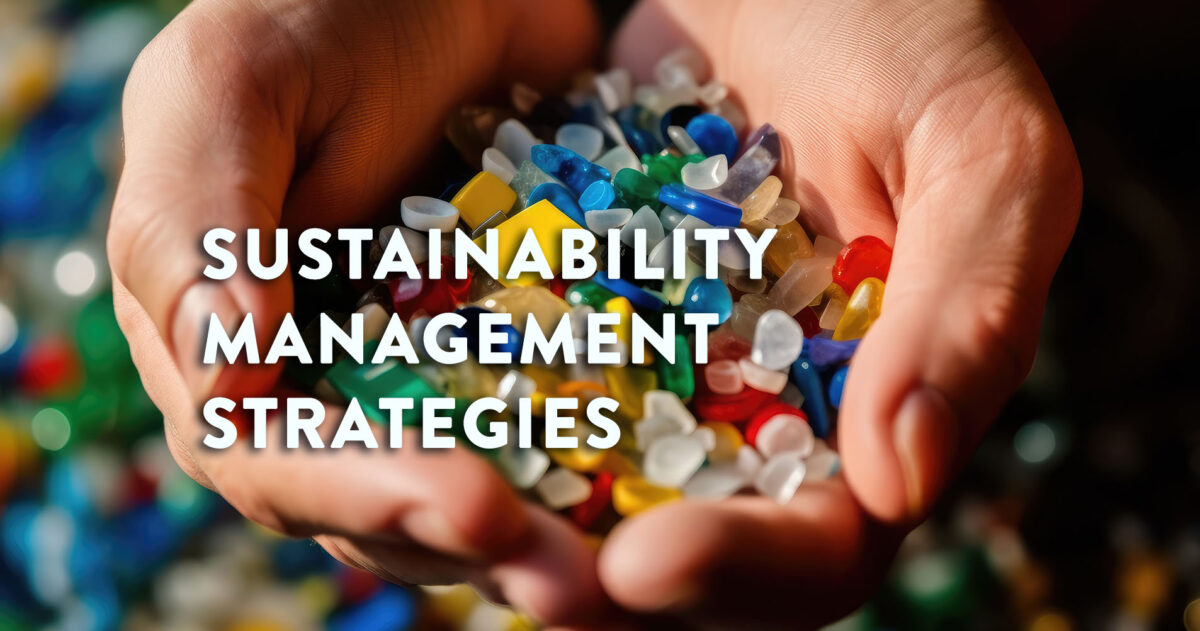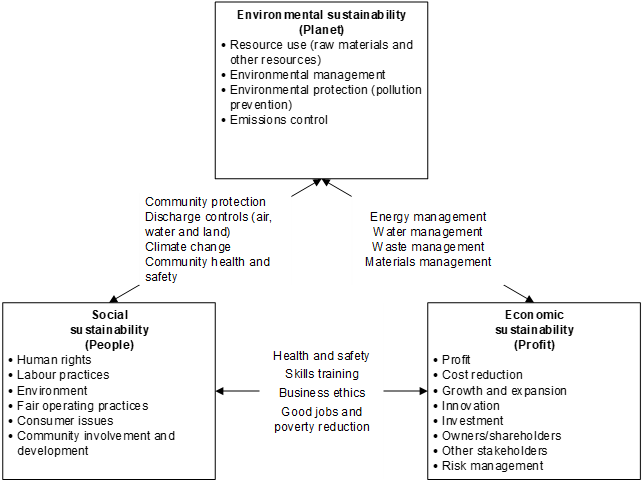Sustainability Management Strategies – November 2023, Part 1

Some readers will remember the ‘Energy–Saving Tip of the Month’ series by Dr Robin Kent that ran in Plastics Engineering from 2009 through 2019. We are now introducing two new series, one on sustainability and the other on energy, to provide plastics processors with tips on how to improve internal and external sustainability and to demonstrate this to the outside world.
There are many books, articles, reports and publications on ‘sustainability’ and its importance in the modern world. Some of these are general, some are specific to the use (or abuse) of plastics, some are supportive of the plastics processing industry and some demonize plastics, some are well-written and unbiased whereas others have a very definite bias for or against plastics. However, there is still a lack of practical information for the plastics processor who wants to improve the sustainability of their business.
There is increasing criticism of both the industry and our products and increasing legislative activity on a range of environmental issues. Some of these criticisms cannot be denied or countered and it is undeniable that the plastics processing industry, along with many other industries, needs to improve its sustainability performance dramatically to become more socially acceptable.
The strategies highlighted in this series will:
- Focus on the key management and technical issues of sustainability topics of relevance to plastics processors
- Concentrate on the concrete things that processors and engineers can do to improve sustainability in plastics processing.
- Be designed to be easy to understand and easy to implement for the plastics processing industry.
Sustainability management is not ‘rocket science’; simply good management and engineering with an eye to the long-term effects of our actions.
What is sustainability?
The large-scale environmental movement effectively started with the publication of Rachel Carson’s ‘Silent Spring’ in 1962 but sustainability moved to the fore in 1987 with the publication of ‘Our Common Future’, also known as ‘The Brundtland Report’.
Previously, most commentators had been largely negative about economic development in terms of sustainability but Brundtland recognized that economic progress was fundamental to sustainability and that poverty reduces sustainability. This new recognition of the balance between economic growth and sustainability led to the famous Brundtland definition of sustainability:
“Sustainable development seeks to meet the needs and aspirations of the present without compromising the ability to meet those of the future. Far from requiring the cessation of economic growth, it recognizes that the issues of poverty and underdevelopment cannot be solved unless we have a new era of growth in which developing countries play a large role and reap large benefits.”
This is a broad definition that is widely recognized and powerfully links the environmental, social and economic aspects of sustainability. Unfortunately, in many cases only the first sentence is quoted and these links are missing in some of the approaches to sustainability.
These concepts are also linked in a definition produced by the US Department of Commerce. This defined sustainable manufacturing as “The creation of manufactured products that use processes that minimize negative environmental impacts, conserve energy and natural resources, are safe for employees, communities, and consumers and are economically sound.”
Whichever definition is used, the vital question still remains for plastics processors seeking to become ‘sustainable’: ‘What is it that we can actually do to become sustainable in environmental, social and economic terms?’ This question is not answered by broad statements of intent or by ‘greenwashing’ but by concrete actions to improve sustainability, however measured.
The essential elements of sustainability
Sustainability has three essential elements, environmental, social and economic and these are shown in the diagram below:

Environmental sustainability
The environmental elements of sustainability are perhaps the most familiar to readers. This element covers the familiar topics of reducing resource use, protecting the environment and controlling emissions. In many cases, there are legal requirements for compliance but these should always be regarded as the minimum to be achieved. Environmental sustainability cannot be divorced from the other elements of sustainability.
Social sustainability
Many of the social sustainability issues fall within what was once termed Corporate Social Responsibility (CSR) and some companies will be more familiar with this idea than with the idea of social sustainability. Many companies already do great work in social sustainability but fail to record it as such and miss a great opportunity.
Economic sustainability
The issue of economic sustainability is not often discussed but the quickest way to reduce poverty is to have strong economic growth and this needs financially viable companies. Economic sustainability means companies that are financially stable and can provide a source of income and growth for their employees, owners and stakeholder.
The linking issues of sustainability
Each element of sustainability has specific issues but there are also issues that link the essential elements, e.g., energy management is an issue that links the environmental and economic elements, reducing energy use reduces emissions (environmental) but also reduces cost (economic). A selection of these linking issues are also shown in the diagram.
Environmental, Economic, and Social Links
Achieving economic sustainability does not mean sacrificing environmental sustainability. Efforts to reduce energy use, water use, waste and materials use not only benefits the environment but also reduce costs and improves economic sustainability.
Economically sustainable companies do not exist in a vacuum, they provide good, safe and rewarding jobs for people, provide skills training, work ethically and enhance the community by being good neighbors.
The environmental impacts of a company are generally external but they may have large financial implications. This means that there are inevitable links between the social and environmental elements. For example, emissions from a site can impact on the local community and emissions as a result of excess energy use can impact on the whole world through climate change.
It is broader than you thought
Many readers can be forgiven for being surprised at the breadth of the concept of sustainability. It is truly broader than you thought. The good news is that most companies are already doing a great deal towards being sustainable. They may not record it as such but in most cases sustainable business is simply good business.
The simple fact that you are reading this article indicates that you are interested in sustainability, concerned about the implications for your business or want to know how to go forward. The motives don’t matter and the definition doesn’t really matter either, except as a useful tool to try to understand what it is that you can do to get better.
What can processors do to help? (and both survive and prosper)
The sub-title here is just as important because we need an industry that is sustainable by any metric and that will continue to deliver benefits to the world.
Every processor needs to:
- Understand the impact of their operations and products in all areas of sustainability.
- Identify the actions necessary to reduce the impact of their operations and products.
- Work to reduce the impact of their operations and products.
- Identify the actions that will affect other areas in the wider world.
- Work both up and down the supply chain to reduce the impact of their operations and products.
- Be prepared to pivot away from unsustainable products and towards sustainable products.
This is not going to be easy for many companies but there is no alternative. If your products stop being relevant and are judged (on whatever criteria) to be unsustainable then you will stop producing them (either willingly or unwillingly).
Whatever your own views on sustainability, this is going to be the defining issue for the next 20 years.
